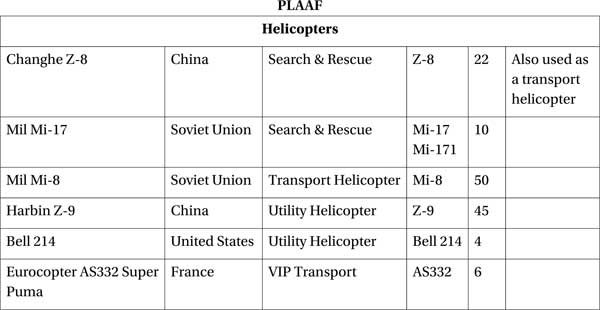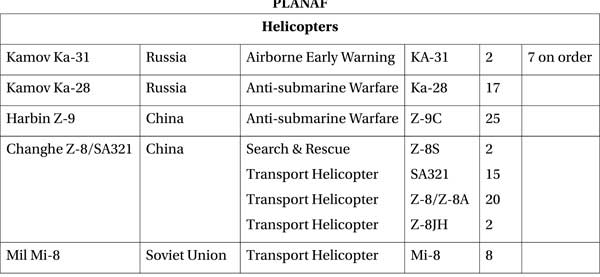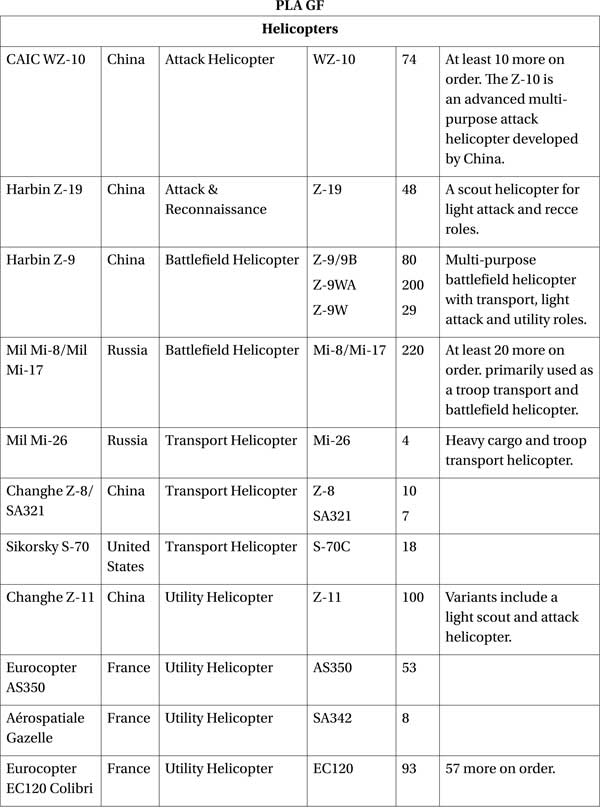PWC officials claim that their engines were intended for the civil variant only and that they were unaware the engines would be used in the military Z-10 variant. In fact, there was never a civilian version of the Z-10 operationalised. PWC conveniently overlooked the fact that Changhe Aircraft Industries is a known supplier to the PLA as well as to other armed forces across the world. Canada is not a participant in the EU arms embargo on China despite giving “in principle” support for the 1998 EU Code of Conduct on Arms Exports. Hence, China is not on Canada’s Area Control List of states to which military exports are banned. Arms exports to China are reviewed by Canadian export control officials on a “case-by-case” basis. Approval of the export permit for the engine shipments would have followed a review of the circumstances of the joint military/civilian helicopter programme.
The emerging Chinese aerospace market is expected to be one of the largest in the world in the near future…
If the approvals were conditional on the use of the PWC engines solely for civilian aircraft, it raises the all-important question about how the engines were diverted for military purposes. As a result of PWC’s involvement with the Z-10, China gained technology that potentially accelerated the development of its own advanced jet propulsion systems. Analysts and experts agree that the software obtained from PWC can be modified for use in other jet engines, not just for helicopters but also for fixed-wing fuel control. It is no consolation for the Western world that, as a result of an investigation by the US State Department in 2010, the parent US company United Technologies Corporation was slapped with a $75 million fine, an amount far exceeding the cost of the 10 engines sold by PWC to China.
The Z-10 case is not isolated. PWC has exported aero-engines to power Chinese-manufactured aircraft with military use for decades and deliveries continue today. In the past five years, such transfers have included PT6B-67A turboprop engines for the Z-8 multi-role transport helicopter, PW-206C engines for A109 civilian and military helicopters and PT6C-67E turbo-shaft engines for the EC175/Z15 medium helicopter. The emerging Chinese aerospace market is expected to be one of the largest in the world in the near future and the PWC is unlikely to shy away from the business opportunity to provide engines across a range of civilian and military aircraft programmes.
Acquisitions
China’s economic might has also enabled it to buy into the helicopter manufacturing industry worldwide. In 2009, AVIC had acquired Austria’s Fischer Advanced Composite Components and in 2013, it acquired Germany’s Thielert Aircraft Engines. In May this year, Guangdong Elecpro Electric Appliance Holding, a Chinese company, announced plans to acquire two European aerospace companies, the Swiss-based Mistral Engines SA which manufactures engines for light aircraft, helicopters and unmanned military vehicles and Germany’s SkyTrac, which develops helicopters with dual rotors. The acquisitions are a part of a focused push by China to advance its aerospace programmes and bridge the gap in military technical knowledge with the West, both for its civilian market and military systems.
The recent surge in Sino-Russian relations has had an effect on military-technological cooperation between the two countries…
Perhaps even more significant than these acquisitions is that of Michigan-based Enstrom Helicopter Corporation by Chinese entity Chongging Helicopter Investment Co. Ltd. in late 2012. Enstrom was started in 1959 and currently manufactures a complete line of helicopters. The three-seat, piston-powered F28F and 280FX are popular training, sport and light commercial aircraft. The larger turbine-powered 480B is available as a three-place advanced trainer and patrol aircraft, a four-seat training helicopter, or as an executive transport with three to five seats.
For law enforcement applications, Enstrom produces an optionally equipped variant of the 480B, known as the Guardian and the F28F called the Sentinel. Several militaries utilise Enstrom machines in the world. The 480B was originally developed for the US Army. The F28F and the 280FX are recognised as cost-effective military training helicopters. Venezuela’s Ministry of Defence has recently contracted with Enstrom for the supply of 16 420B training helicopters of its Air Force and Navy. The Venezuelan National Guard has been operating Enstrom helicopters since 1970s.
The Russian Connection
Historically, China has had helicopters of Soviet/Russian origin in military use for a long time (see Table). The recent surge in Sino-Russian relations has had an effect on military-technological cooperation between the two countries.
In May this year, Russian President Vladimir Putin went to China for talks during which, China and Russia announced 49 new agreements, ranging from programmes to enhance political ties to plans for military cooperation. As part of one of the agreements, Russia and China will jointly design a new helicopter based on Russian Mi-26 which is a heavy transport helicopter for military and civilian use, capable of carrying up to 28 tonnes. China reportedly declined the offer of Mi-26 helicopters from Russia and opted for the new design. Some reports indicate that the new design aims at a payload of 80 tonnes but that figure appears implausible.
China has managed to keep channels open with the Western world for keeping its military helicopters stables quantitatively intact…
In accordance with the contract of 2012 between China’s Poly Technologies and Russia’s arms exporter Rosoboronexport State Corporation, the company ‘Russian Helicopters’ is to supply to China 52 Mi-171E helicopters. Of these, 48 are expected to be transferred to China by end-2014. Thus, China has managed to keep channels open with the Western world as well as with traditional ally Russia for keeping its military helicopters stables quantitatively and qualitatively respectable.
Conclusion
According to the IISS Military Balance 2013, China’s military helicopters total up to 914, the important types being Mi-17/171, Ka-28, Z-8, Z-9, Z-10, Z-11, Z-15, Z-20 and several French types license-built in China. Wikipedia gives the total figure as 1,172 ( Table 1). The figure is not a very daunting one, given China’s territorial extent and its extensive coastline. In comparison, Wikipedia gives the figure for Indian military helicopters to be 735, including Coast Guard holdings. The notable feature is that Avicopter has the capacity to manufacture over 100 helicopters a year.
China has the world’s second largest defence budget next only to the US and with the future looking upbeat for China’s economy and for its military spending, defence manufacturers and contractors the world over are eyeing the Chinese military helicopter market. Meanwhile, the types being produced as “indigenous” lag behind the leading edge of helicopter technology as extant in the Western world. If the US relents over the arms embargo, there could be a significant change in the tenor and texture of China’s military helicopter fleet, with implications for a possible future Sino-Indian armed conflict.







